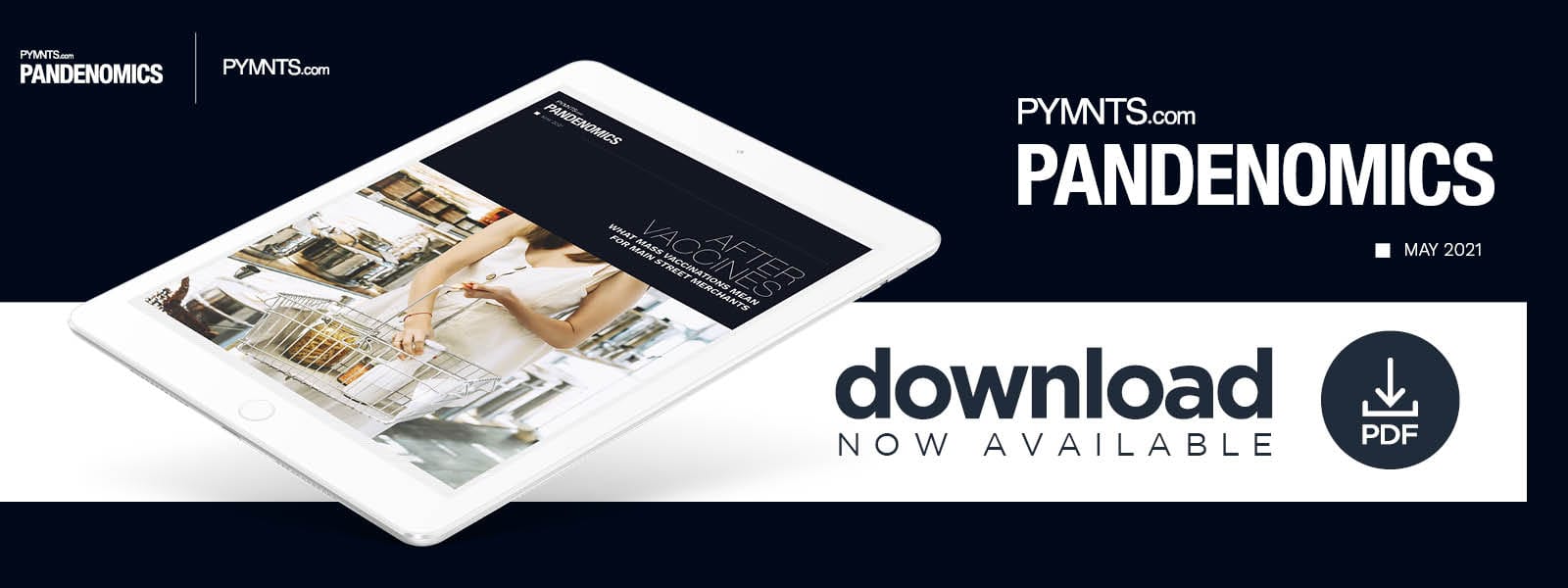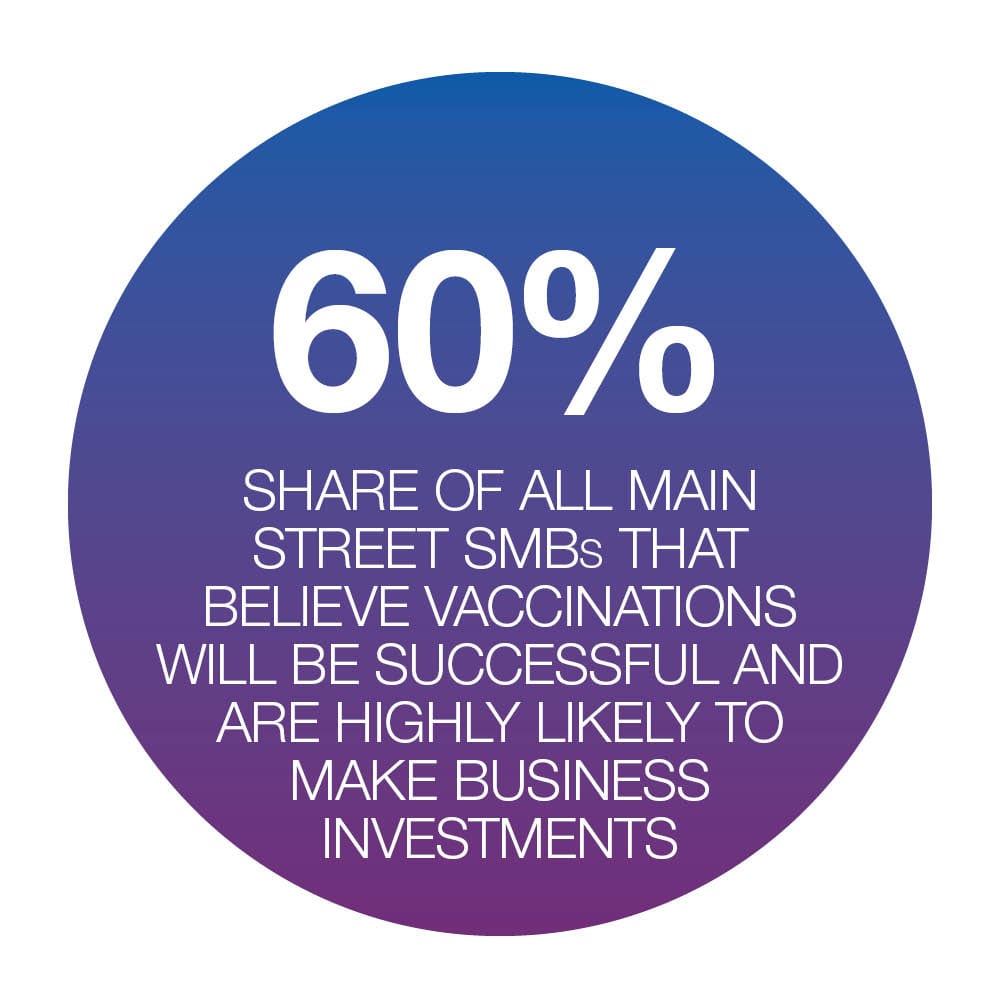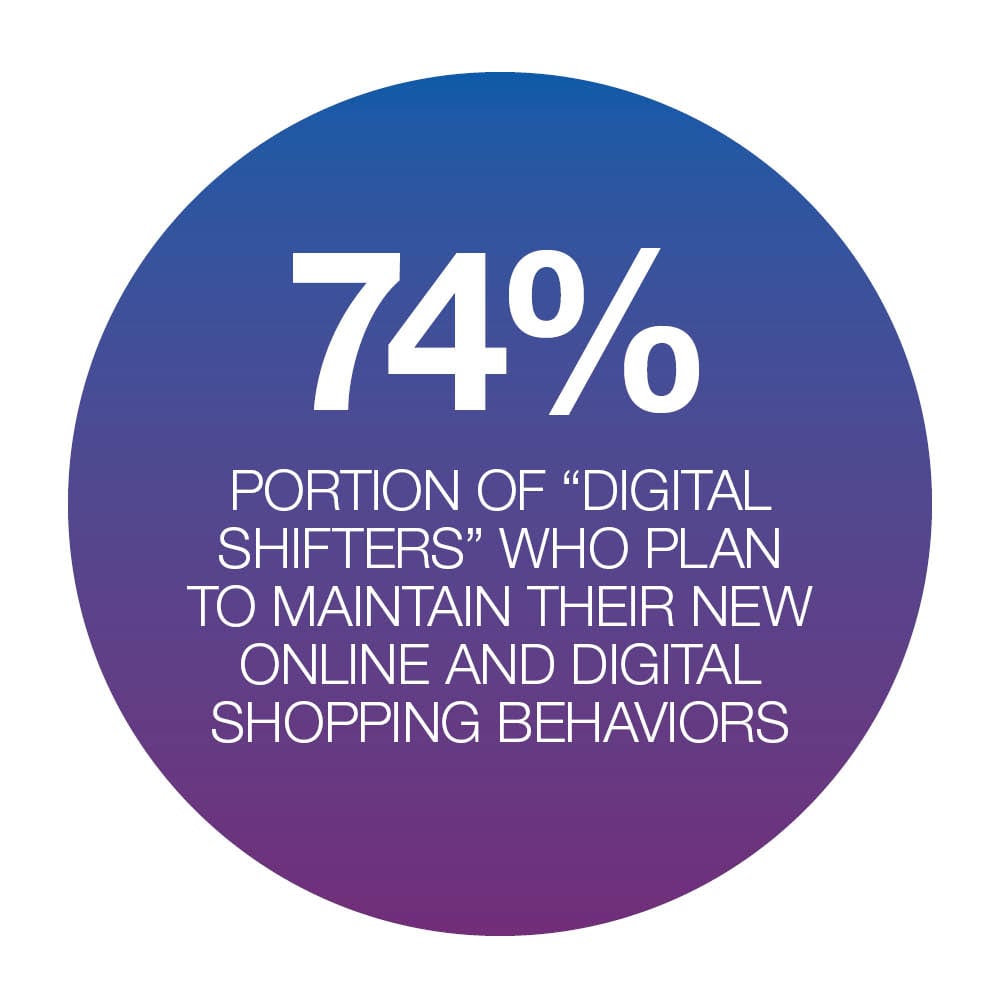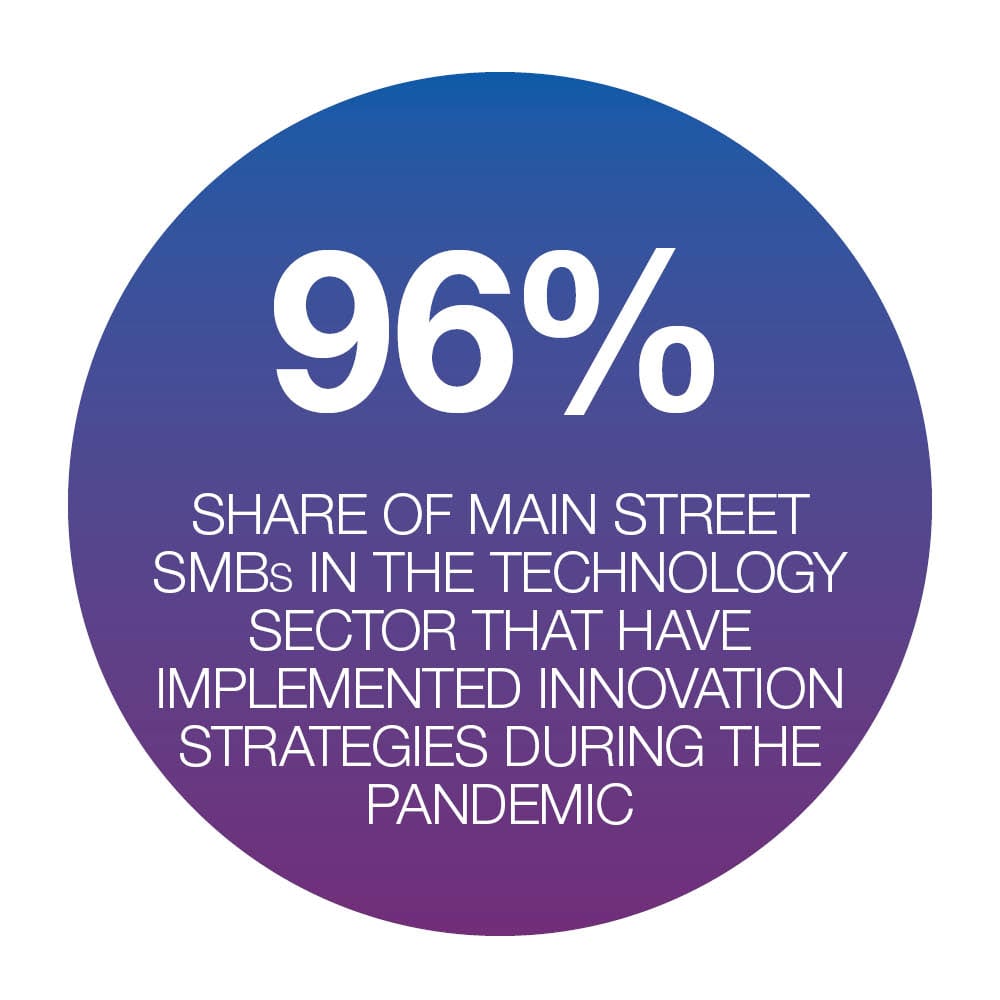NEW DATA: Nearly Half Of Main Street SMBs Will Boost Business Investments As Vaccines Roll Out

 Small to mid-sized businesses (SMBs) on Main Street in the United States have had a challenging year, with the pandemic forcing them to dramatically shift how they provide services and sell products. As vaccines have rolled out and 40 percent of the U.S. population is now fully vaccinated, with 50 percent having at least one dose, Main Street SMBs are optimistic about economic recovery and eager to return to business as usual. PYMNTS research reveals that 25 percent of Main Street SMB owners believe their communities’ economic environments have returned to pre-pandemic levels, and that business will be fully back to normal by early October.
Small to mid-sized businesses (SMBs) on Main Street in the United States have had a challenging year, with the pandemic forcing them to dramatically shift how they provide services and sell products. As vaccines have rolled out and 40 percent of the U.S. population is now fully vaccinated, with 50 percent having at least one dose, Main Street SMBs are optimistic about economic recovery and eager to return to business as usual. PYMNTS research reveals that 25 percent of Main Street SMB owners believe their communities’ economic environments have returned to pre-pandemic levels, and that business will be fully back to normal by early October.
 In After Vaccines: What Mass Vaccinations Mean for Main Street Merchants, PYMNTS surveyed 530 Main Street SMBs in the technology, construction and contracting, retail trade, manufacturing and professional services sectors to examines how small U.S. firms are coping with the financial challenges as the Centers for Disease Control and Prevention (CDC) restrictions ease. The latest edition in the Pandenomics series looks at how these SMBs conduct their businesses, view market conditions and make their plans for investments in the next 18 months as vaccination rates climb.
In After Vaccines: What Mass Vaccinations Mean for Main Street Merchants, PYMNTS surveyed 530 Main Street SMBs in the technology, construction and contracting, retail trade, manufacturing and professional services sectors to examines how small U.S. firms are coping with the financial challenges as the Centers for Disease Control and Prevention (CDC) restrictions ease. The latest edition in the Pandenomics series looks at how these SMBs conduct their businesses, view market conditions and make their plans for investments in the next 18 months as vaccination rates climb.
PYMNTS’ analysis shows that many SMB owners successfully adapted and modernized their business models during the pandemic, which put them in a much better position to take advantage of changing consumer trends this past year. An overwhelming 88 percent implemented innovation strategies, such as expanding their online and third-party marketplace presences, employing contactless payments technologies and broadening their social media usage. Main Street SMBs in the technology sector led these investments, with 96 percent reporting that they implemented innovation strategies during the pandemic. Manufacturing, professional services, retail and construction followed at 94 percent, 92 percent, 91 percent and 85 percent, respectively.
Seventy percent of Main Street SMB owners overall have invested in equipment that supports touchless experiences, while larger Main Street SMBs are more likely to have implemented innovation strategies, with 94 percent of these SMBs with annual revenues of $500,000 to $1 million having implemented innovation strategies compared to 82 percent for those with revenues of less than $500,000.
In terms of future investments, half of all Main Street SMBs are planning to make investments in a variety of areas, such as new employees, additional equipment and advertising. Interest in these investments is particularly high among Main Street SMBs in the technology sector, with 61 percent of these Main Street SMBs saying they are “very” or “extremely” likely to invest in their businesses in the next six months. The technology sector is followed by Main Street SMBs in the manufacturing (56 percent), professional services (54 percent) and construction and contracting (54 percent) segments. Retail trade lags behind at 37 percent.
 It is important to note that attitudes toward vaccinations vary by location. Seventy-eight percent of metropolitan Main Street SMBs expect vaccination efforts to successfully control the virus’ spread, for example, compared to just 41 percent of their rural counterparts. Additionally, Main Street SMB owners from rural areas are also less likely to get vaccinated in the next three months. Only 13 percent of this group said they will get vaccinated in the next three months compared to 56 percent of Main Street SMB owners in metropolitan areas. Fifty-nine percent of all respondents in the sample are already vaccinated. These findings imply that the vaccination rate among rural Main Street SMB respondents is plateauing.
It is important to note that attitudes toward vaccinations vary by location. Seventy-eight percent of metropolitan Main Street SMBs expect vaccination efforts to successfully control the virus’ spread, for example, compared to just 41 percent of their rural counterparts. Additionally, Main Street SMB owners from rural areas are also less likely to get vaccinated in the next three months. Only 13 percent of this group said they will get vaccinated in the next three months compared to 56 percent of Main Street SMB owners in metropolitan areas. Fifty-nine percent of all respondents in the sample are already vaccinated. These findings imply that the vaccination rate among rural Main Street SMB respondents is plateauing.
These findings touch on just a few of the insights outlined in PYMNTS’ research. To learn more about how Main Street SMBs feel about vaccinations and how they will affect economic recovery, you can download the report.